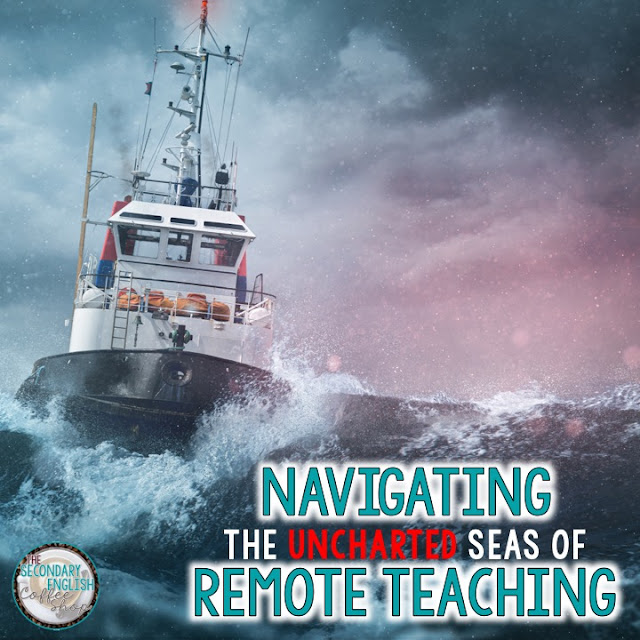Multiple times since we’ve started our statewide stay-at-home order (I’m in California), I’ve woken up with worry and have not been able to fall back asleep easily. So, the long and the short of it is this: I see you, I hear you, I feel you, I am you. I am in this with you.
Since there isn’t much anyone can do to help rectify this situation immediately, I’m trying my best. I am also trying my best not to unload any more unnecessary stress onto my students. I teach in California, and my state has already said that students are not to be held harmless during this time. Essentially, that means their grades can only go up from this point.
To try to engage my students as best as I can, while also holding class and attempting instruction, I have completely switched gears. My lessons are now week-long mini-units that encompass multiple standards and skills. I’m trying to engage them with authentically interesting content that they will actually want to do.
I came across this lesson idea as I was mindlessly scrolling on Facebook one afternoon. I abruptly stopped my scrolling as I came to this post. Immediately, it drew me in because of how relevant it was to our current situation. Initially, I was going to plan an entire week-long mini-unit on this post. But once I did some quick fact-checking, I soon realized that the entire post, one that (at the time) had more than 16,000 shares was fake. Had I not stopped and fact-checked this post, I most certainly would have shared it, and thus I would have also contributed to the spreading of false information on social media.
It was in that one brief moment that I knew I actually did want to use this social media post for my lesson plan. However, in a matter of just a few seconds, I changed the objectives. Since I know all-too-well how stressful remote teaching is, I’m sharing this with all of you.
My assignment this week requires students to use a variety of skills: research, fact-checking, analysis, reflection, and probably even more. However, the real purpose of this assignment is to get students to realize how important it is to verify that information is reliable and credible as they complete the tasks in this assignment.
I want them to see how pervasive false and misleading information truly is. I want them to see how quickly inaccuracies that could potentially influence our decisions can spread. But most importantly, I want them to come to this conclusion on their own, and I want them to gain this valuable insight as they fact-check the post itself. You can make your own copy of this resource by clicking here.
While so many teachers are navigating the uncharted seas of remote teaching, I want to take a moment and share a few things that have been working for me.
1. Consistency - I am posting assignments on Mondays in the morning and they are due on Friday by the close of the normal school day. My students know that they can always expect this from me.
2. Flexibility - I have no idea what my students are f=going through right now. Yes, I do check in with them, but I still don’t know their real truth. For that reason, I need to make sure that I am remaining flexible with my students. This blog post, 5 Things to Avoid While Remote Teaching, might help you be more flexible with your students.
3. Compassion - This is hard on all of us. It is difficult for teachers. It is difficult for parents. It is difficult for our students. Understanding this and extending some compassion will go a long way during remote teaching. If you'd like to read more about this, here's another blog post: 10 Things to Consider for Remote Teaching.
I hope this resource helps you out during this time! I am using it as a week-long project. I'll assign it on Monday, and then on Wednesday, I will hold a virtual class to discuss the work with my students.
If you teach public speaking in a distance learning or blended learning model, you might also like this blog post by Secondary Sara.

























